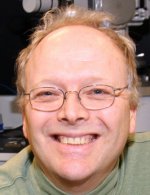 |
 |
| Douglas Keszler | Dave Johnson |
EUGENE, Ore. -- (Sept. 8, 2011) -- A collaborative Oregon State University-University of Oregon Center for Sustainable Materials Chemistry, born under a National Science Foundation grant in 2008, is moving into a second phase under a new five-year, $20 million NSF grant.
The new NSF funding, awarded through its Centers of Chemical Innovation Program, will allow the Center for Sustainable Materials Chemistry to expand research and development and boost efforts to translate basic-level discoveries into the commercialization of new technologies. A large component of Phase 2 is the education of students, postdoctoral associates and faculty on how to accelerate this translation.
"The NSF’s chemistry division is pleased to support the Centers of Chemical Innovation program, which aims to address difficult but critically important scientific problems that cannot be met by individual investigators working alone," said Matt Platz, director of NSF’s chemistry division. "The research performed by center scientists could provide the intellectual foundation for a new, green chemical industry in the U.S."
Since the center's initial formation under a $1.5 million grant to Douglas Keszler, a chemist at Oregon State University and adjunct professor at the UO, collaborating scientists at eight institutions have applied environmentally friendly green-chemistry approaches to the synthesis and fabrication of compounds, thin films and composite materials.
“The establishment of this center could not come at a better time,” said Oregon Gov. John Kitzhaber. “Not only will the innovation and outreach activities contribute to job creation, the green materials emphasis helps ensure that Oregon is looking forward in meeting the challenges of the 21st century economy with fresh ideas and a well-trained workforce.”
Such green, or toxically benign, products could pave the way for next-generation applications of a wide variety of high-performance electronic devices applicable in such fields as integrated-circuit manufacturing, solar energy and medicine. Several patents have been filed for work done under Phase 1 and subsequently licensed by the center's spinout Inpria Corp.
"The center has created a transformational thin-film materials platform with broad potential in electronics and energy markets," said Andrew Grenville, chief executive officer of Inpria. "Graduates from the center are already playing pivotal roles in commercializing the Phase 1 developments through our global partnerships."
Under the Phase 1 grant -- as the Center for Green Materials Chemistry -- Keszler was the principal investigator. Co-investigators were David C. Johnson, the UO's Rosaria P. Haugland Chair in Pure and Applied Chemistry, Darren W. Johnson, a UO chemist and adjunct professor at OSU, and John F. Wager, professor of electrical engineering at OSU.
"We've built a strong team for Phase 2, so we're excited about the opportunities for accelerating our basic research efforts, building on our transformational nanoscience of Phase 1 and expanding programs to translate findings to commercial markets," Keszler said.
U.S. Sen. Ron Wyden, D-Oregon, heralded the center as it moved into its second phase: "It is through grants like these that the United States is able to pursue the development of new and safer technologies that will drive job creation. While the University of Oregon and Oregon State University compete on game day, they collaborate every day in the laboratory, playing a vital role in the innovation that will bring about economic recovery."
The Phase 2 grant will provide OSU and the UO the opportunity to make a significant impact on the national scale, said David Johnson, who will head education and outreach efforts. "Our vision for the Center is to develop an understanding of the fundamental chemistry enabling the synthesis and assembly of complex nanoarchitectures for technological applications," he said.
The UO and OSU each will receive about $9 million. The remainder goes to collaborating researchers at Washington University in St. Louis, Rutgers University, University of California, Davis, and University of California, Berkeley. Other collaborators include the National Institutes of Standards and Technology, Advanced Photon Source at the Argonne National Laboratory, Lawrence Berkeley National Laboratory and University of Victoria in British Columbia.
To date, collaborating researchers primarily have shared facilities at OSU and the UO, including the Lorry I. Lokey Laboratories. A main office and lab space may be based in the Robert and Beverly Lewis Integrative Science Building, now projected to open in Fall 2012.
Keszler will continue as director. In addition to David Johnson's educational role, Darren Johnson (no relation), Sophia Hayes, professor of chemistry at Washington University in St. Louis, and Eric Garfunkel, professor of chemistry and chemical biology at Rutgers University, will head the center's leadership team.
Under Phase 2, researchers will develop: films and 3D nanostructures from water-based precursors; a new nanochemistry based on interleaving structural elements to yield unprecedented performance; synthetic techniques to make precursor clusters; and films with intentional nano-architectures and new properties. Under an open knowledge model, all innovations will be shared after appropriate patents are recorded.
"On the education front, we want to create the next generation of graduate education programs with an emphasis on training students in the skills required to translate research into commercial innovations and to assume leadership positions in academia, industry and government labs," David Johnson said. "We aim to create innovative training programs for postdoctoral researchers as well as pilot new research based education models for talented undergraduates."
Also planned is a series of science-pub presentations across all regions of Oregon; such informal get-togethers to engage in science topics with the public have regularly drawn interest and large turnouts in Portland, Eugene and Corvallis. Center leaders also will develop an innovative high-school chemistry curriculum in collaboration with Hermiston High School.
ONAMI (Oregon Nanoscience and Microtechnologies Institute), a state-designated signature research center, is a major supporter of the Center for Sustainable Materials Chemistry. ONAMI partners with the National Collegiate Inventors and Innovators Alliance on the center’s commercialization program.
About the University of Oregon
The University of Oregon is among the 108 institutions chosen from 4,633 U.S. universities for top-tier designation of "Very High Research Activity" in the 2010 Carnegie Classification of Institutions of Higher Education. The UO also is one of two Pacific Northwest members of the Association of American Universities.
About Oregon State University
OSU is one of only two U.S. universities designated a land-, sea-, space- and sun-grant institution. OSU is also Oregon’s only university to hold both the Carnegie Foundation’s top designation for research institutions and its prestigious Community Engagement classification. Its approximately 25,000 students come from all 50 states and more than 90 nations. OSU programs touch every county within Oregon, and its faculty teach and conduct research on issues of national and global importance.
About the National Science Foundation
The NSF is an independent federal agency that supports fundamental research and education across all fields of science and engineering. In fiscal year 2011, its budget is about $6.9 billion. NSF funds reach all 50 states through grants to nearly 2,000 universities and institutions. Each year, NSF receives over 45,000 competitive requests for funding, and makes over 11,500 new funding awards. NSF also awards over $400 million in professional and service contracts yearly.
Media Contacts: Jim Barlow, UO director of science and research communications, 541-346-3481, jebarlow@uoregon.edu ; David Stauth, science writer, OSU news and research communications, 541-737-0787, david.stauth@oregonstate.edu ; and Lisa M. Van Pay, Office of Legislative and Public Affairs, Directorate for Mathematical and Physical Sciences, NSF, 703-292-8796, lvanpay@nsf.gov
Sources: David C. Johnson, Rosaria P. Haugland Chair in Pure and Applied Chemistry at the UO, 541-346-4612, davej@uoregon.edu ; and Douglas Keszler, Distinguished Professor of Chemistry at OSU, 541-737-6736, douglas.keszler@oregonstate.edu